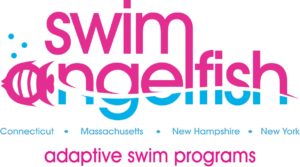 My older son with sensory processing disorder (SPD) benefited greatly from going to a land-based occupational therapist (OT) for six months. I asked her what we should do about him learning to swim, given that he had such a bad experience with it when he was 2 years old.
My older son with sensory processing disorder (SPD) benefited greatly from going to a land-based occupational therapist (OT) for six months. I asked her what we should do about him learning to swim, given that he had such a bad experience with it when he was 2 years old.
You might remember that he was so overwhelmed by the lights, sounds, the way the water felt, and his gravitational insecurity in the water that one day after class he came home and wiped down half the kitchen to relieve his stress. That’s a pretty strong reaction from a toddler. [Read more…]
 WARNING: I am a huge, biased fan of Cindy Freedman and Ailene Tisser of
WARNING: I am a huge, biased fan of Cindy Freedman and Ailene Tisser of 

